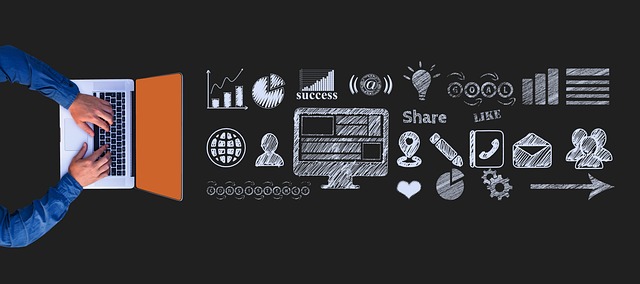Artificial intelligence (AI) is revolutionizing gym operations by leveraging real-time data from cardio workouts, group classes, and user feedback through advanced machine learning algorithms. This technology provides insights into trends like class participation, equipment usage, and member goals, enabling optimizations in scheduling, personalized recommendations, and equipment maintenance. Key applications include AI feedback aggregation for group classes, allowing gyms to make data-driven decisions that enhance operational efficiency and improve the overall user experience, fostering a safer and more engaging environment.
In today’s data-driven landscape, gyms are leveraging real-time data to enhance operational efficiency and member experiences. Artificial intelligence (AI) plays a pivotal role in collecting and analyzing this data, from tracking gym activities to aggregating valuable feedback from group fitness classes. By harnessing AI feedback aggregation, gyms can significantly improve instructor performance, facilitate personalized learning experiences, and boost student engagement. This article explores these advancements, focusing on how real-time data optimization, particularly through AI, transforms gym space layout and equipment utilization for better member satisfaction and enhanced workout effectiveness.
- The Role of AI in Gym Operations: Explore how artificial intelligence can be leveraged to collect and analyze real-time data from various gym activities, focusing on its potential to enhance overall operational efficiency.
- AI Feedback Aggregation for Group Classes: Delve into the specific benefits of using AI to aggregate feedback from group fitness classes. Discuss improved instructor performance, personalized learning experiences, and enhanced student engagement.
- Optimizing Gym Space and Equipment Utilization: Examine strategies for utilizing real-time data to optimize gym space layout and equipment distribution. Highlight how this can lead to better member satisfaction and more effective workouts.
The Role of AI in Gym Operations: Explore how artificial intelligence can be leveraged to collect and analyze real-time data from various gym activities, focusing on its potential to enhance overall operational efficiency.

Artificial intelligence (AI) has the potential to revolutionize gym operations by transforming the way data is collected, analyzed, and utilized. Through advanced machine learning algorithms, AI can process vast amounts of real-time data generated during various gym activities, from individual workouts on cardio machines to group classes. This data includes user performance metrics, equipment usage patterns, and even customer feedback, all of which can be aggregated and analyzed to gain valuable insights.
For example, AI can identify trends in group class participation, helping gym management optimize scheduling and resource allocation. It can also provide personalized recommendations for users based on their workout history and goals, enhancing the overall user experience. Furthermore, AI-driven systems can monitor equipment maintenance needs, ensuring that machines are well-maintained and safe for users. This proactive approach to facility management not only improves operational efficiency but also fosters a safer and more enjoyable environment for gym members.
AI Feedback Aggregation for Group Classes: Delve into the specific benefits of using AI to aggregate feedback from group fitness classes. Discuss improved instructor performance, personalized learning experiences, and enhanced student engagement.

In today’s digital era, gym operations are being revolutionized by leveraging real-time data and AI technologies. Specifically, AI feedback aggregation for group classes is proving to be a game-changer. By collecting and analyzing student feedback in real time, instructors can tailor their teaching methods to better suit the needs of each participant, fostering a more personalized learning experience. This not only improves overall instructor performance but also significantly enhances student engagement.
AI systems can identify patterns in feedback data, allowing educators to pinpoint areas where adjustments are needed. Whether it’s refining workout routines, adapting teaching styles, or addressing specific challenges faced by students, this real-time insight enables instructors to create a dynamic and responsive learning environment. As a result, group fitness classes become more effective, ensuring that each participant enjoys a customized journey towards their fitness goals.
Optimizing Gym Space and Equipment Utilization: Examine strategies for utilizing real-time data to optimize gym space layout and equipment distribution. Highlight how this can lead to better member satisfaction and more effective workouts.

In today’s digital era, gyms are leveraging real-time data and AI to optimize their space and equipment utilization, marking a significant shift in fitness center operations. By collecting and analyzing member behavior, preferences, and feedback from group classes—including AI-driven aggregations—gym owners can make informed decisions about layout changes and equipment distribution. This strategic approach ensures that commonly used machines and spaces are strategically placed for optimal access, reducing wait times during peak hours and enhancing overall member satisfaction.
The integration of real-time data allows gym managers to design layouts that cater to specific workout routines and class preferences. For instance, identifying popular group exercise classes can lead to the allocation of more space and equipment for these activities. This tailored approach not only fosters a more enjoyable environment but also encourages members to engage in diverse workouts, contributing to their long-term fitness goals.
In conclusion, leveraging artificial intelligence for gym operations offers a promising future for the fitness industry. By harnessing real-time data, gyms can significantly enhance their overall efficiency and member experiences. Specifically, AI feedback aggregation for group classes not only improves instructor performance but also facilitates personalized learning and increased student engagement. Furthermore, optimized gym space and equipment utilization based on real-time insights lead to higher member satisfaction and more effective workout routines. As the world of fitness continues to evolve, embracing these innovations will be key to staying ahead in the market.
